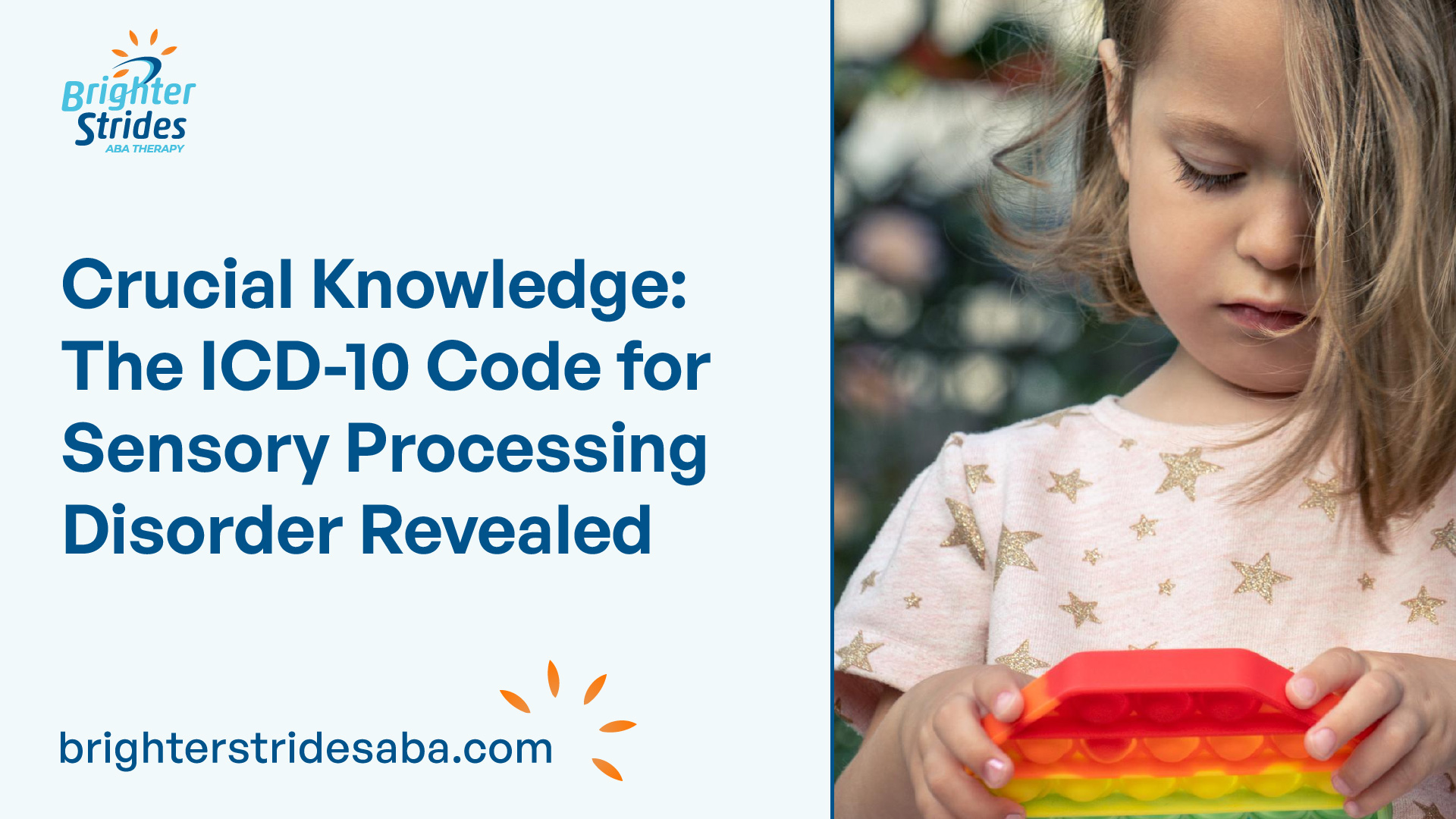Understanding Sensory Processing Disorder
Sensory Processing Disorder (SPD) is a condition that affects how the brain processes and responds to sensory information from the environment. Individuals with SPD may have difficulties with sensory integration, which can impact their daily functioning and quality of life.
Definition and Overview
Sensory Processing Disorder, also known as Sensory Integration Dysfunction, is a neurological condition that affects the way individuals receive, interpret, and respond to sensory input. Sensory input refers to information received through the senses, including touch, sight, sound, taste, and smell. In individuals with SPD, the brain has difficulty organizing and appropriately responding to this sensory information.

SPD can affect people of all ages and is often seen in children. It is estimated that 5-16% of children experience sensory processing difficulties [source]. However, it is important to note that SPD is not recognized as a standalone diagnosis in the Diagnostic and Statistical Manual of Mental Disorders (DSM-5), but it is recognized as a condition that can coexist with other diagnoses, such as autism spectrum disorder or attention deficit hyperactivity disorder.
Types of Sensory Processing Disorders
There are different types of Sensory Processing Disorders, each characterized by specific sensory difficulties. The three main types are:
- Sensory Modulation Disorder: This type of SPD involves challenges with regulating and responding to sensory stimuli. Individuals may experience sensory sensitivity (hypersensitivity) or sensory seeking behaviors (hyposensitivity) in response to certain sensory inputs.
- Sensory Discrimination Disorder: Individuals with this type of SPD have difficulties accurately perceiving and distinguishing between different sensory stimuli. They may struggle to identify subtle differences in textures, sounds, or tastes, leading to challenges in daily activities.
- Sensory-Based Motor Disorder: This type of SPD affects motor coordination and planning in response to sensory input. Individuals may have difficulties with balance, coordination, and fine motor skills, which can impact their ability to perform tasks such as handwriting or participating in sports.
It’s important to note that individuals with SPD may experience a combination of these types, and the severity of symptoms can vary greatly from person to person.
Understanding the definition and different types of Sensory Processing Disorder is the first step in recognizing and addressing the challenges faced by individuals with this condition. In the next sections, we will explore the diagnosis process, the specific ICD-10 code for SPD, treatment options, and the ongoing research in this field.
Diagnosis of Sensory Processing Disorder
To properly diagnose sensory processing disorder (SPD), healthcare professionals follow specific diagnostic criteria and an assessment process.
Diagnostic Criteria
The diagnostic criteria for sensory processing disorder are outlined in the Diagnostic and Statistical Manual of Mental Disorders, Fifth Edition (DSM-5). According to the DSM-5, individuals with SPD exhibit persistent difficulties in processing sensory information, resulting in significant functional impairments in daily life.
The DSM-5 specifies the following criteria for diagnosing SPD:
- The presence of abnormal responses to sensory stimuli or an atypical pattern of sensory processing.
- The symptoms must be present in multiple contexts, such as home, school, or work.
- The symptoms must significantly impact an individual’s social participation, daily activities, or occupational performance.
- The symptoms are not better explained by another medical or mental health condition.
Healthcare professionals evaluate an individual’s sensory processing patterns and assess whether these patterns significantly interfere with their daily functioning.
Assessment Process
The assessment process for sensory processing disorder involves comprehensive evaluation by a trained healthcare professional, such as an occupational therapist or a developmental pediatrician. The assessment typically includes the following components:
- Clinical Interviews: The healthcare professional conducts interviews with the individual and their caregivers to gather information about the individual’s sensory experiences and challenges.
- Questionnaires and Checklists: Standardized questionnaires and checklists are used to assess sensory processing patterns and identify specific difficulties.
- Direct Observation: The healthcare professional observes the individual’s behaviors and responses to sensory stimuli in various environments, such as home, school, or therapy settings.
- Structured Assessments: Specific assessments and tests may be administered to further evaluate sensory processing abilities and identify areas of impairment.
The assessment process aims to gather comprehensive information about the individual’s sensory processing patterns, identify specific challenges, and determine the impact of these challenges on their daily life.
By following the established diagnostic criteria and conducting a thorough assessment, healthcare professionals can accurately diagnose sensory processing disorder. It is important to consult with a healthcare professional who specializes in sensory processing disorders to ensure a proper evaluation and diagnosis.
ICD-10 Code for Sensory Processing Disorder
Importance of ICD-10 Codes
ICD-10 codes play a crucial role in the field of healthcare as they provide a standardized way to classify and document various medical conditions. These codes are used by healthcare professionals, insurance companies, researchers, and policymakers to accurately identify and track specific disorders. By using the appropriate ICD-10 code for a particular condition, healthcare providers can ensure effective communication, proper billing, and accurate documentation.
Specific ICD-10 Code for SPD
Sensory Processing Disorder (SPD) is a condition that affects how the brain processes and responds to sensory stimuli. While SPD is recognized and diagnosed by healthcare professionals, it is important to note that it does not currently have a specific ICD-10 code dedicated solely to this disorder.
In the absence of a specific code for SPD, healthcare providers may utilize related ICD-10 codes to document and classify the condition. These codes may include:
- F88: Other disorders of psychological development
- F84.9: Pervasive developmental disorder, unspecified
- R41.840: Sensory processing disorder
It is worth mentioning that the use of these codes may vary depending on the healthcare setting and the professional judgment of the healthcare provider. It is advisable to consult with a healthcare professional or medical coding specialist to ensure accurate coding and documentation.
While the lack of a dedicated ICD-10 code for SPD may pose challenges in terms of specific identification and tracking, ongoing research and advancements in the understanding of SPD may lead to the development of a dedicated code in the future. It is important to stay updated with the latest developments in the field and consult with healthcare professionals for the most accurate and current information regarding the coding and classification of Sensory Processing Disorder.
Treatment Options for Sensory Processing Disorder
When it comes to managing sensory processing disorder (SPD), there are various treatment options available. These options aim to help individuals with SPD develop strategies to cope with sensory challenges and improve their overall quality of life. Two common treatment approaches include therapy approaches and lifestyle modifications.
Therapy Approaches
Therapy plays a crucial role in the treatment of sensory processing disorder. Different types of therapy can be beneficial for individuals with SPD, depending on their specific needs and symptoms. Some therapy approaches commonly used for SPD include:
- Occupational Therapy (OT): Occupational therapy focuses on helping individuals develop and improve the skills needed for daily activities and tasks. In the context of SPD, OT can assist individuals in developing sensory integration skills, improving sensory modulation, and enhancing their ability to engage in daily routines and tasks effectively.
- Sensory Integration Therapy (SI): Sensory integration therapy is a specialized form of occupational therapy that aims to help individuals process and respond appropriately to sensory information. This therapy utilizes controlled sensory experiences in a structured and repetitive manner, helping individuals gradually adapt to and integrate sensory input.
- Behavioral Therapy: Behavioral therapy, such as cognitive-behavioral therapy, can be beneficial in helping individuals with SPD manage any associated anxiety or behavioral challenges that may arise due to sensory issues. This therapy focuses on identifying and modifying negative thought patterns and behaviors.
- Speech Therapy: Speech therapy can be helpful for individuals with SPD who also experience speech and language difficulties. Speech therapists can provide techniques and strategies to address communication challenges and improve language skills.
Lifestyle Modifications
In addition to therapy approaches, certain lifestyle modifications can significantly improve the management of sensory processing disorder. These modifications may involve:
- Sensory Diet: A sensory diet is a term used to describe a personalized set of activities and strategies designed to provide the sensory input an individual needs to stay regulated and focused throughout the day. This may include activities like deep pressure, brushing techniques, or incorporating sensory breaks into daily routines.
- Environmental Adaptations: Making modifications to the individual’s environment can help create a more sensory-friendly and comfortable space. This may involve reducing sensory triggers, creating designated quiet areas, or using adaptive equipment to support sensory needs.
- Routine and Structure: Establishing consistent routines and structured schedules can help individuals with SPD anticipate and prepare for sensory experiences. Providing predictability and consistency can help reduce anxiety and increase overall comfort.
- Self-Care Strategies: Encouraging and teaching self-care strategies, such as deep breathing exercises, mindfulness techniques, and sensory grounding techniques, can empower individuals with SPD to manage sensory challenges independently.
By combining therapy approaches and lifestyle modifications, individuals with sensory processing disorder can enhance their sensory regulation skills, improve their ability to engage in daily activities, and minimize the impact of sensory challenges on their overall well-being. It is important to work closely with healthcare professionals to develop a personalized treatment plan that addresses the specific needs and goals of each individual with SPD.
Challenges Faced by Individuals with Sensory Processing Disorder
Living with Sensory Processing Disorder (SPD) can present various challenges for individuals. These challenges can have a significant impact on their daily lives, but there are coping strategies that can help mitigate the difficulties.
Daily Impacts
Individuals with Sensory Processing Disorder may experience a range of challenges in their daily lives. These challenges can vary depending on the specific type of SPD and the individual’s unique sensory preferences. Some common daily impacts include:
- Sensory Overload: Individuals with SPD may become overwhelmed by certain sensory stimuli, such as loud noises, bright lights, or crowded spaces. This can lead to feelings of anxiety, stress, and difficulty focusing.
- Sensory Seeking or Avoidance: Some individuals with SPD may seek out sensory input, while others may actively avoid certain sensations. For example, a person with sensory seeking tendencies may excessively touch objects or seek out deep pressure, while someone with sensory avoidance tendencies may be hypersensitive to certain textures or smells.
- Challenges with Daily Activities: Everyday activities such as getting dressed, eating, or bathing can be challenging for individuals with SPD. They may struggle with sensory inputs related to clothing textures, food textures, or sensitivity to water.
- Difficulties with Social Interactions: Sensory processing difficulties can impact social interactions and relationships. Individuals with SPD may struggle to tolerate physical contact, have difficulty understanding personal space boundaries, or may be overwhelmed in social settings.
Coping Strategies
While living with SPD can present challenges, there are coping strategies that can help individuals manage their sensory sensitivities and improve their overall well-being. Here are some effective coping strategies for individuals with SPD:
- Sensory Diet: Developing a sensory diet involves incorporating specific sensory activities into daily routines to provide the right amount of sensory input. This may include activities such as deep pressure activities, tactile stimulation, or engaging with calming sensory tools.
- Environmental Modifications: Making modifications to the environment can help create a sensory-friendly space. This may involve reducing clutter, adjusting lighting, using noise-cancelling headphones, or creating designated quiet areas.
- Self-Regulation Techniques: Learning self-regulation techniques can help individuals with SPD manage their responses to sensory stimuli. Deep breathing exercises, mindfulness techniques, and sensory grounding techniques can be helpful in regulating emotions and reducing anxiety.
- Occupational Therapy: Occupational therapy is often recommended for individuals with SPD. Occupational therapists can provide tailored interventions and strategies to help individuals develop skills and strategies to manage their sensory sensitivities.
- Collaboration and Education: Collaboration with healthcare professionals, educators, and support networks is essential for individuals with SPD. By working together, they can develop personalized strategies, provide education, and create supportive environments.
While challenges are faced by individuals with SPD, understanding their unique sensory needs and implementing effective coping strategies can greatly improve their quality of life. It is important to seek professional guidance and support to develop an individualized plan for managing SPD and promoting overall well-being.
Research and Future Directions
As our understanding of sensory processing disorder (SPD) continues to evolve, ongoing studies are being conducted to further explore this condition and develop innovative management strategies. This section will delve into the current research and future directions in the field of sensory processing disorder.
Ongoing Studies
Researchers are actively engaged in studying various aspects of sensory processing disorder to enhance our knowledge and improve treatment options. Ongoing studies focus on areas such as:
- Neurobiology of SPD: Research is being conducted to understand the underlying neurobiological mechanisms involved in sensory processing disorder. By exploring the brain processes and neural pathways associated with SPD, researchers aim to uncover potential targets for intervention and therapy.
- Genetic Factors: Scientists are investigating the genetic factors that may contribute to the development of sensory processing disorder. By identifying specific genetic markers associated with SPD, researchers hope to shed light on its hereditary nature and potential genetic predispositions.
- Impact on Daily Functioning: Ongoing studies aim to evaluate the impact of sensory processing disorder on the daily functioning of individuals across various age groups. By assessing challenges faced by individuals with SPD in different environments, researchers can develop targeted interventions and support strategies.
Innovations in SPD Management
Advancements in research are driving the development of innovative approaches to manage sensory processing disorder. Some notable innovations in SPD management include:
- Technology-Based Interventions: Researchers are exploring the use of technology-based interventions to enhance sensory integration and provide therapeutic support. Virtual reality, interactive apps, and wearable devices are being developed to create immersive sensory experiences and assist individuals with sensory processing challenges.
- Sensory-Friendly Environments: Designing sensory-friendly environments is a growing area of interest. This involves creating spaces that minimize sensory overload and promote comfort for individuals with sensory processing difficulties. These environments may incorporate elements such as adjustable lighting, soundproofing, and tactile surfaces to accommodate various sensory needs.
- Multidisciplinary Approaches: Collaborative efforts between different healthcare professionals, including occupational therapists, psychologists, and speech therapists, are being emphasized. This multidisciplinary approach allows for a comprehensive understanding of sensory processing disorder and enables tailored treatment plans for individuals.
Through ongoing research and innovative approaches, the field of sensory processing disorder is advancing to better meet the needs of individuals with SPD. These efforts aim to improve diagnosis, develop effective interventions, and enhance the overall quality of life for individuals living with sensory processing challenges.
References
- https://www.spdstar.org/basic/understanding-sensory-processing-disorder
- https://www.ncbi.nlm.nih.gov/pmc/articles/PMC5859973/
- https://www.aota.org/About-Occupational-Therapy/Professionals/CY/Articles/SPD.aspx
- https://www.understood.org/en/learning-thinking-differences/child-learning-disabilities/sensory-processing-issues/understanding-sensory-processing-disorder
- https://www.webmd.com/children/sensory-processing-disorder
- https://www.spdfoundation.net/about-sensory-processing-disorder/

 We've just released an article!
Check out our blog!
We've just released an article!
Check out our blog!



